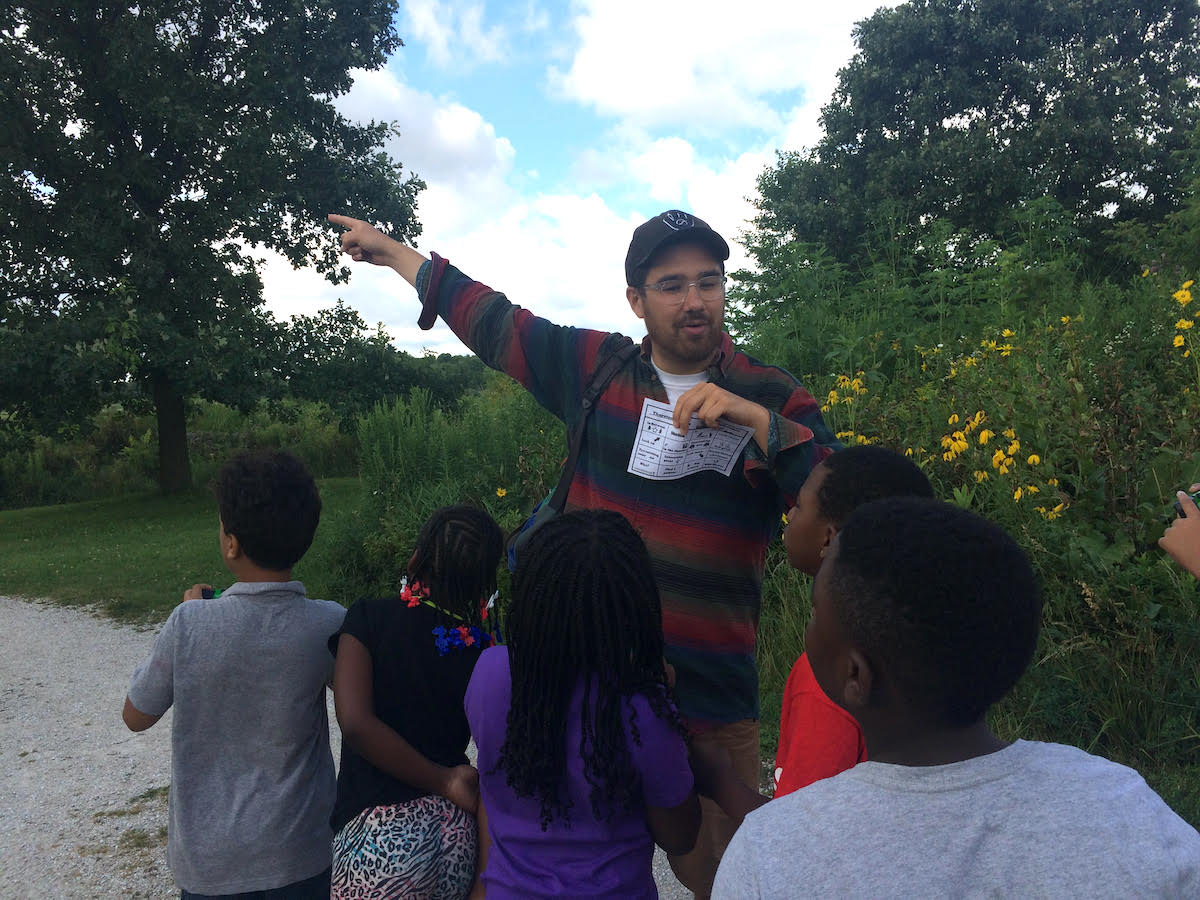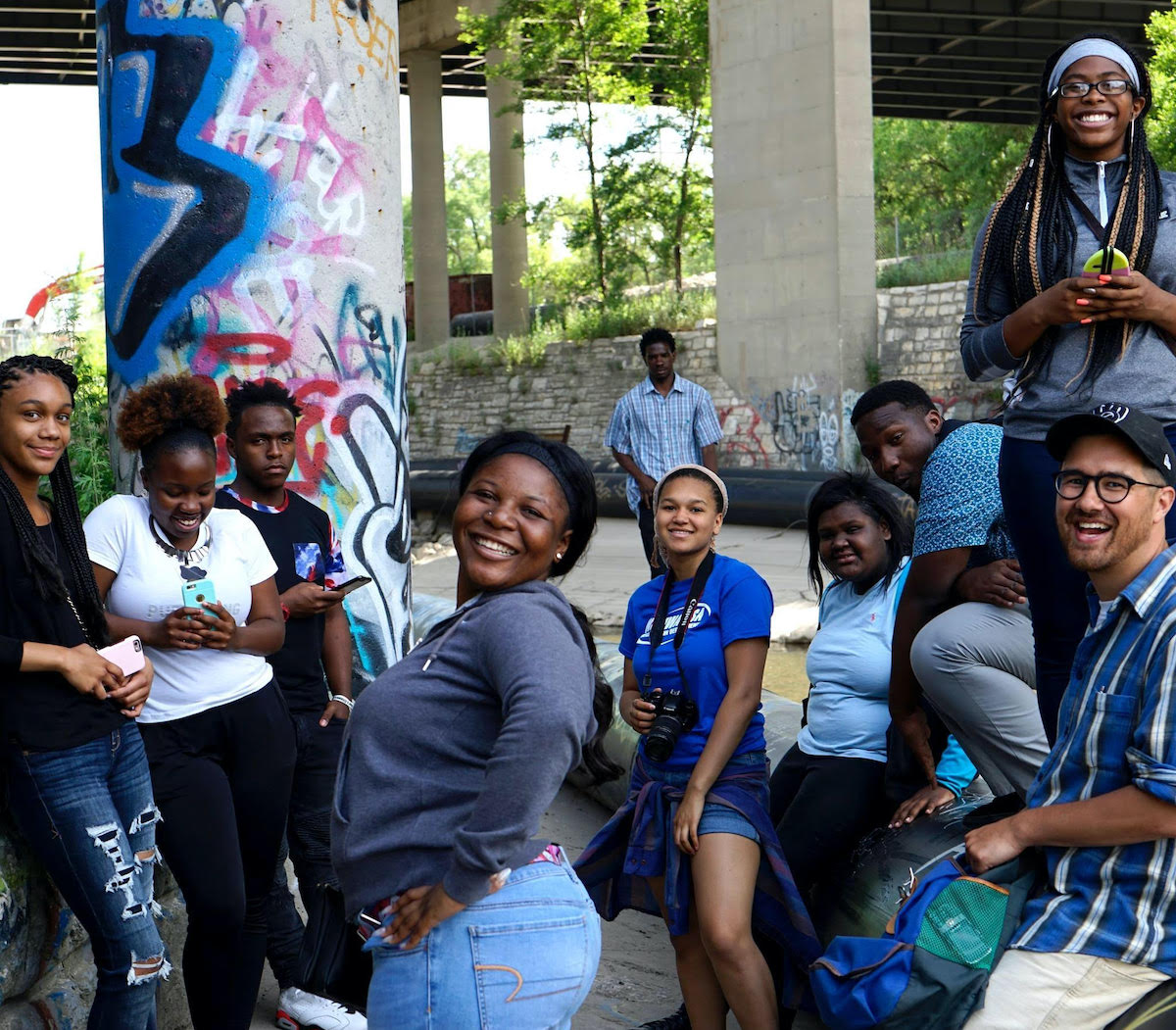Adam Carr has been called a storyteller, an artist and a community activist. But the longtime Milwaukeean doesn’t care for titles, or being thrust into a box.
Professionally, Carr refers to himself as a bit of a “shapeshifter,” and having travailed community projects in media, public art, neighborhood tours, writing, film and photography, he cuts an amorphous figure — but there’s a purpose behind his various creative pursuits.
Namely, to lead citizens to common ground.
“In Milwaukee, we’re so divided that the way we learn about each other is driving through neighborhoods or not going to them because of what we’ve seen in the media,” Carr told Technical.ly. “Sometimes those [perceptions] are internalized and it becomes this loop. And frankly, those are distortions. It’s not the reality that most people live in.”
Storytelling is at the root of Carr’s work. Since he first began an internship at 88Nine Radio Milwaukee in 2008, Carr has slowly made a name for himself using storytelling as a tool for community change. Back then, Carr said he shirked in-studio interviews early on and insisted on meeting his subjects right in their own neighborhoods. Around the same time, he was spending his free time door-to-door canvassing for then-Sen. Barack Obama who was running for president. The two roles would ultimately change his perspective on life in the city — and alter his career trajectory.
“I got to experience this incredible swath of Milwaukee,” Carr said. “Then it became this nebula of me extending myself little by little. Collaboration became really big for me. Facilitating dialogue. It helped me see different horizons beyond ourselves.”
Nearly three years and more than 800 broadcast stories later, Carr left the station without a plan except to use his connections and skills to build a better community.

Adam Carr leads Milwaukee youngsters. (Courtesy photo)
What followed is a mishmash of community roles. He spent time working as a consultant, a media instructor, and a producer for a public art project in the Mitchell neighborhood. Each project aimed to capture the people of Milwaukee, and demonstrate the potential of what life could be like, if only more people had the imagination, Carr said. It’s no surprise then, that much of his work includes a strong focus on social justice.
“I wanted to inspire people to think big and explore the community with the fullness it deserved,” he added. “It’s not just [highlighting] potential; sometimes we miss what is here already. We lack imagination for what others can be.”
Carr said his influences go way back to his childhood, where he was raised on the city’s East Side. As a self-proclaimed “Chi-Irish,” his half-Chinese, half-Irish upbringing exposed him to different cultures from an early age but also revealed to him a plethora of commonalities. As a student of the Milwaukee public school district, where most of his friends were Black, it felt natural to embrace all of their differences. It wasn’t something the group really thought about at all.
“I think what’s really important about my upbringing is that it was a great gift to me,” Carr said. “I got to feel the possibility of what a genuinely diverse upbringing can be. I got to feel that and it shaped me. We didn’t have to push the bounds of imagination. I was already knitted into a community that was doing really great things.”

Adam Carr with Milwaukee teens. (Courtesy photo)
Carr said there was a “sense of freedom” during his childhood that he experienced, but that the realities of Milwaukee’s economic and racial disparities began to weigh on him as an adult. There were many times he felt discouraged, many more where he felt angry. But Carr decided to turn his consternation into fuel for his trove of storytelling projects.
“I wanted to co-create stories that help balance the narrative ecosystem of Milwaukee,” added Carr, who currently serves as deputy editor for community engagement for Milwaukee Neighborhood News Service. “When I talk about Milwaukee, whether it’s a [neighborhood] tour or something else, it’s from the people. I become a conduit for those stories. That’s something I advocate for, the complexity of the world in which we live.”
Today, Carr is focused on preserving both the history and the future of the city of Milwaukee. His latest project, as co-chair of the coordinating committee with March on Milwaukee 50th, celebrates the inroads made by protesters in the 1967-1968 fair housing marches. The group plans to install historical markers at significant sites throughout the city to highlight the movement.
Subscribe to This Week in Milwaukee Rising:

This article appears as part of This Week in Milwaukee Rising, a weekly newsletter from Technical.ly highlighting the innovators bringing a more just, equitable and dynamic Milwaukee economy. Subscribe here. The series is underwritten by American Family Insurance Institute for Corporate and Social Impact.
Before you go...
Please consider supporting Technical.ly to keep our independent journalism strong. Unlike most business-focused media outlets, we don’t have a paywall. Instead, we count on your personal and organizational support.
Join our growing Slack community
Join 5,000 tech professionals and entrepreneurs in our community Slack today!

The person charged in the UnitedHealthcare CEO shooting had a ton of tech connections

From rejection to innovation: How I built a tool to beat AI hiring algorithms at their own game

Where are the country’s most vibrant tech and startup communities?


